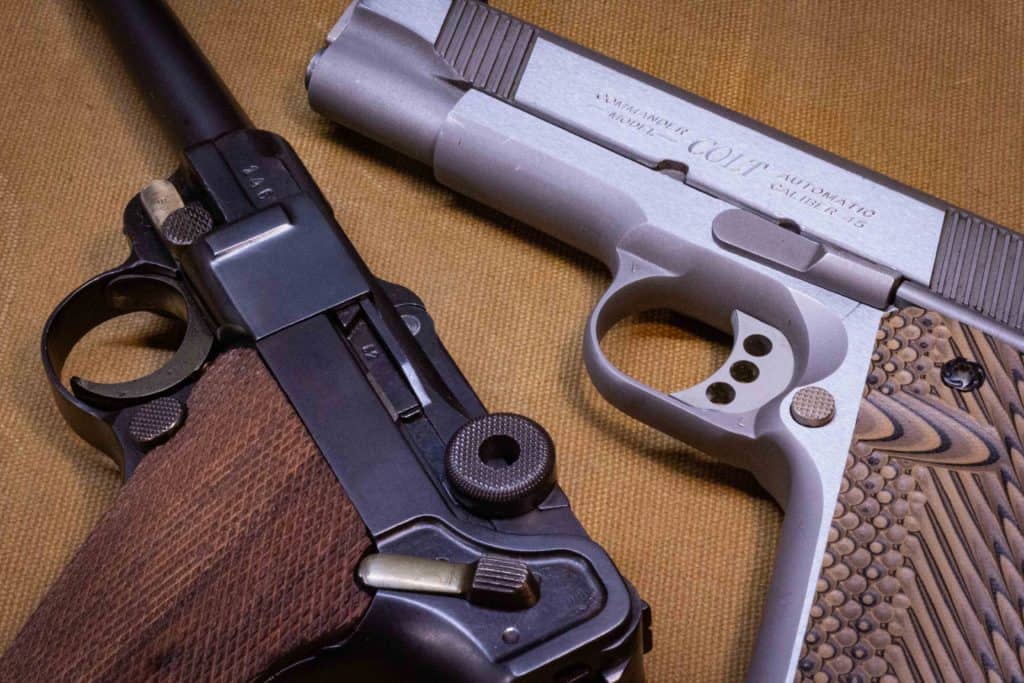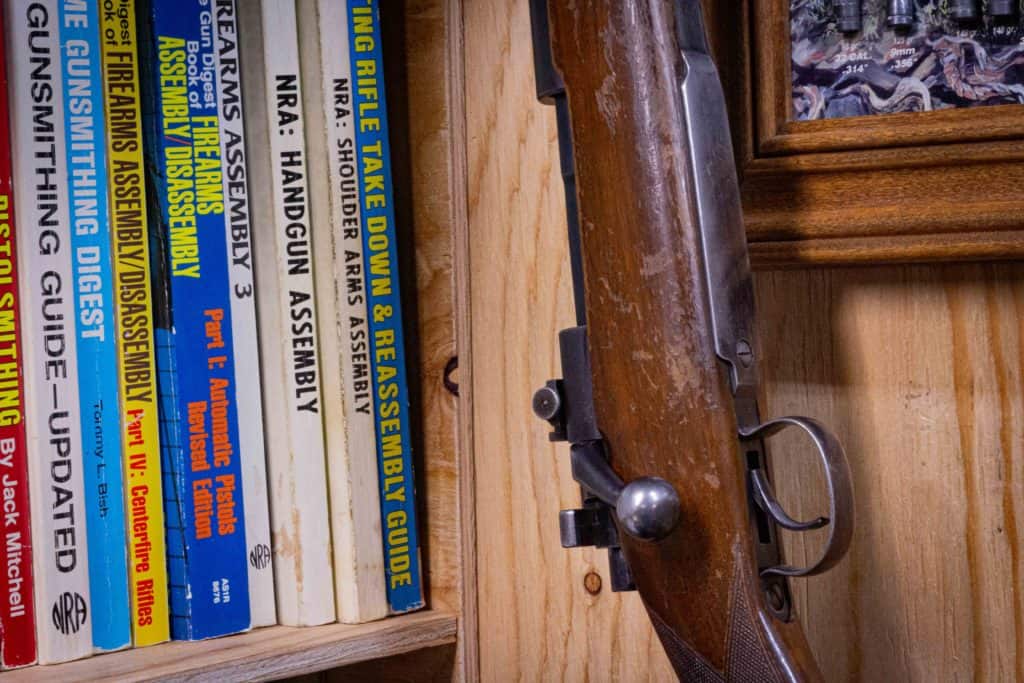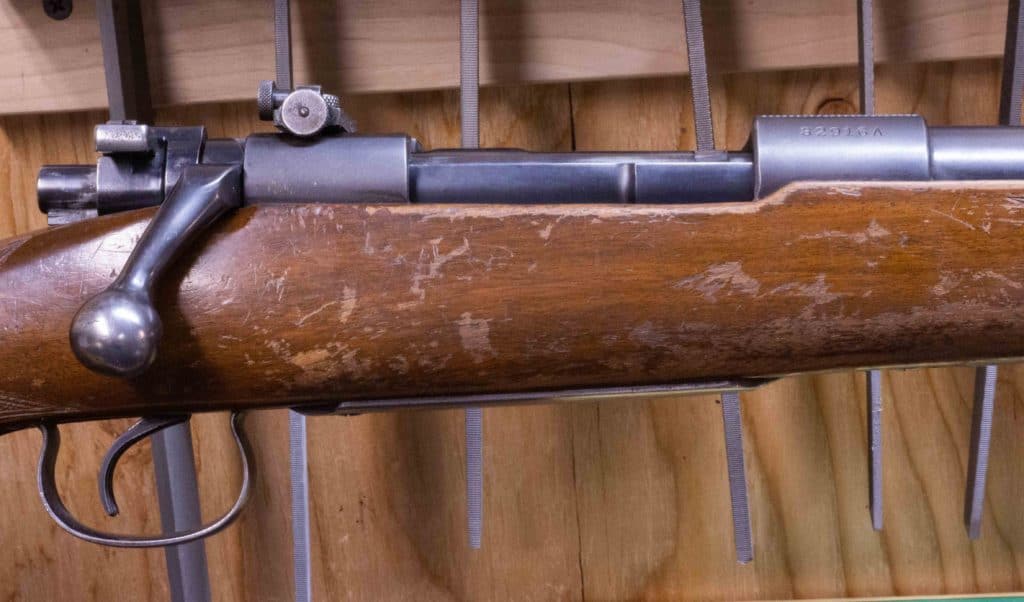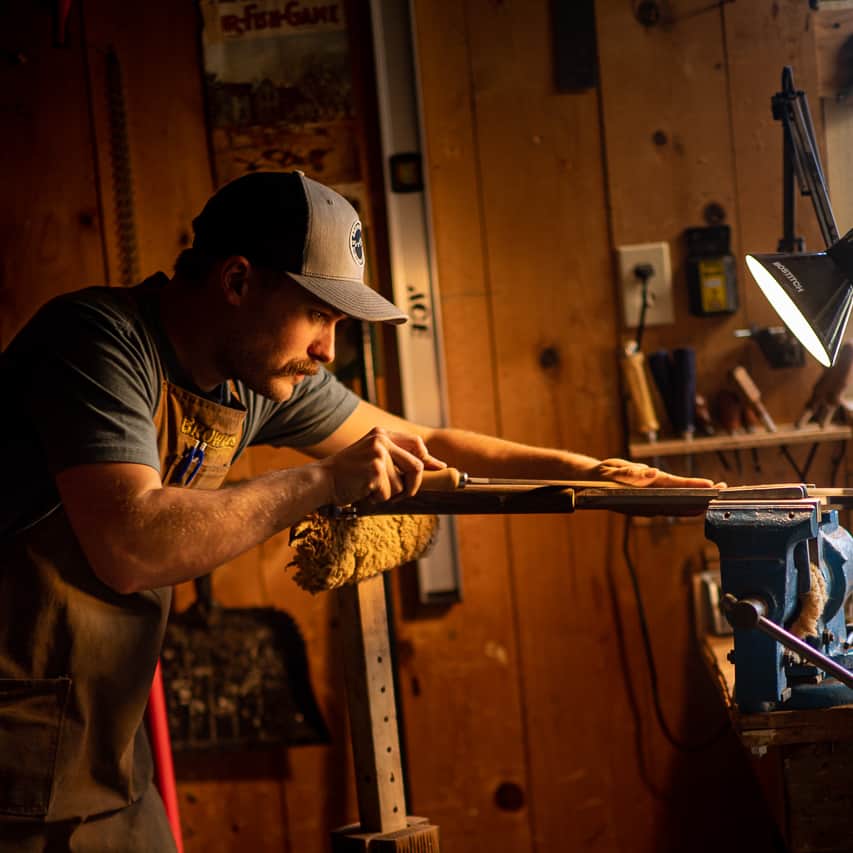
Spend enough time in the world of firearms, and you are bound to come across the term lock time. It is both simple and complex and is an integral part of a shooter’s downrange accuracy.
Lock time is defined as the amount of total elapsed time between actuating the firing mechanism and the firing of the projectile. It is broken down into two distinct phases: trigger actuation to sear release and sear release to firing pin impact.
Lock time is a product of the action’s mechanical design and can sometimes be improved through modifications and aftermarket parts.
Affiliate Disclosure: This article may contain affiliate links. When you use these links, I earn a small commission from each sale generated at no cost to you. This commission helps me continue to put out free content. I work a full-time job that I am very happy with; therefore, I don’t need this commission and am not obligated to speak highly of any product. Everything written is my own opinion: the good, the bad, and the ugly.
- What is Lock Time
- How Does it Affect Accuracy?
- Improving Lock Time
- More on Lock Time
- Read more about various gunsmithing topics here!
What is Lock Time
Lock time is a purely mechanical function measured in milliseconds and ultimately delays the bullet exiting the barrel. For example, when comparing a flintlock muzzleloader and a Remington 700, the time it takes a flintlock to fire once the trigger is pulled is longer than the 700. The differences between these two are obvious, but the same basic principles apply when comparing other designs.
When the shooter pulls the trigger, a whole chain of events starts inside that firearm. The trigger rotates, moving the sear and releasing the hammer or striker. The hammer or striker starts to release the energy that is stored in the form of a spring. As it moves forward and strikes the cartridge’s primer, the ignition process begins. The primer creates a flame intended to ignite the powder and throw the bullet down the barrel.
All of the mechanical movements involved in igniting a primer are part of the lock time. Stuart Otteson, in his book “The Bolt Action,” states that in a bolt action, lock time is primarily a function of the length of firing pin travel, the power of the mainspring, and the weight that the mainspring must accelerate. Friction plays a much smaller role in affecting lock time, which we will discuss later.
Those same principles are applied across the board when dealing with handguns. For example, a striker-fired pistol has a much faster lock time than a hammer-fired 1911 or revolver.

How Does it Affect Accuracy?
When a shooter is firing a gun, it is nearly impossible to remain completely steady. The sight picture floats as your mind tries to calculate when to pull the trigger and start the firing sequence. The longer the lock time, the more movement your barrel does before the bullet exits the muzzle. This has a significant effect on long-range accuracy as the effects are multiplied.
It is easy to imagine lock time’s effect during hunting scenarios as it is greatly exaggerated. As your heart is pounding and you are trying to level the scope on the vitals of your targeted game, it is inconceivable to remain perfectly steady. The longer it takes for that bullet to leave the muzzle, the less chance you have for the shot to strike precisely where you are aiming.
Theoretically, if you could keep a firearm completely steady, lock time would have minimal effect on accuracy.

Improving Lock Time
Improving lock time is pretty simple if the aftermarket components are available. While reducing mass does play a massive part in this, resist the urge to start milling away extra material on your firing pins. They were designed that way by engineers for a reason and shouldn’t be messed with.
To improve lock time, let’s break it down into two phases: trigger actuation to sear release and sear release to firing pin impact.
Trigger Actuation to Sear Release:
In the trigger actuation to the sear release phase, only minor improvements can be made. It is important to remember that lock time has nothing to do with the weight or creep of a trigger pull. Lock time is everything after the trigger is pulled.
To improve lock time within this first phase, you are limited to changing out the trigger design, but that comes at a cost. Generally speaking, the better the trigger is, the slower the lock time. I am speaking completely to the design here, in general.
The fastest will be a direct-acting trigger. The direct-acting trigger is when the trigger and sear are working directly with each other. Think of a simple revolver trigger. Many times, the trigger is in direct contact with the sear notch on the hammer, and there are no levers or linkages combining the two. This design is the fastest actuating when referring to lock time.
Next, the modern lever-type sear override triggers found in most bolt actions will be slightly slower than a direct-acting trigger. Once the trigger actuates the firing process, multiple levers move to release the sear and firing pin. This process happens within milliseconds and has a minimal effect on lock time. The trigger pulls tend to be much better on the lever designs, which more than makes up for being a hair slower.
Lastly, there are set triggers. While set triggers are known for their extremely light triggers, they also create some of the slowest lock times found in a trigger design. This is because once the trigger is actuated, there are multiple parts that move and work to get to the point of releasing the sear.
If trying to improve the lock time on your firearm, it is better to focus on the next phase of it, sear release to firing pin impact.
Sear Release to Firing Pin Impact:
This is where you can see the most benefit in increasing your lock time. Again, looking at Otteson’s three principles, we can see where improvements are made: increase the mainspring force, shorten the striker’s fall, lighten the firing pin assembly, and decrease the required striker energy.
Increasing the mainspring force will make the firing pin accelerate faster. This is as simple as using a heavier mainspring. Obviously, there are negatives to this approach, such as heavier trigger pull, and possible punctured primers on certain designs. If there is a heavier one available on the market, feel free to try it, but avoid increasing it without a thorough knowledge of the firearm.
Shortening the striker or firing pins travel will reduce the time it takes for the firing pin to strike the primer. This isn’t something that is done at home. Usually, this is seen in a design change at the factory.
Lightening the firing pin assembly will reduce the amount of accelerated mass. However, this will not affect the energy needed to detonate the primer, which is driven by the mainspring. This is a simple way to improve lock time, and many options are available on the aftermarket, depending on your firearm. For example, Power Customs sells this titanium 10/22 firing pin half the weight of a factory 10/22 firing pin.
Reducing the striker’s energy works hand in hand with the above. Lightening the firing pin and increasing the mainspring force will produce a low-impulse blow. Otteson defines this as “snappy.” SAAMI and the U.S. Army both did tests that concluded that a sharp, high-velocity impact is more effective in detonating the primer. Fig. 2 in U.S. Patent 3,056,226 shows this improvement.
Use coupon code KTG10 to get 10% off your order of $150 or more at Brownells.
The Effect of Friction
Lastly, friction plays a relatively minor role in lock time. It can be ignored in straight-line lock mechanisms like those used in most bolt actions. However, for hammer-fired locks, look for any signs of drag within the mechanism. This will inevitably slow down the second phase of lock time. To alleviate this, polish in the drag direction, giving it a mirror shine.

More on Lock Time
The Bolt Action Vol. 1 by Stuart Otteson was referenced a lot in this writing. It has the most extensive description of lock time that I’ve seen. There are 24 pages of definitions and formulas used to calculate lock time for your firearm in the appendix. It also has some helpful charts comparing the different models and their respective lock times. This book is an excellent resource for anyone that loves bolt-action rifles.
Read more about various gunsmithing topics here!

Written by: Kurt Martonik
Kurt is a Gunsmith, Reloader, Hunter, and Outdoorsman. He grew up in Elk County, Pennsylvania, where he became obsessed with the world of firearms. Following high school, Kurt enlisted in the United States Air Force as a Boom Operator, where he eventually rose to the position of Instructor. After his military service, he attended the Colorado School of Trades(CST) in Lakewood, CO for gunsmithing. Following graduation, he accepted a job at C. Sharps Arms in Montana, where he worked as a full time stockmaker and gunsmith.